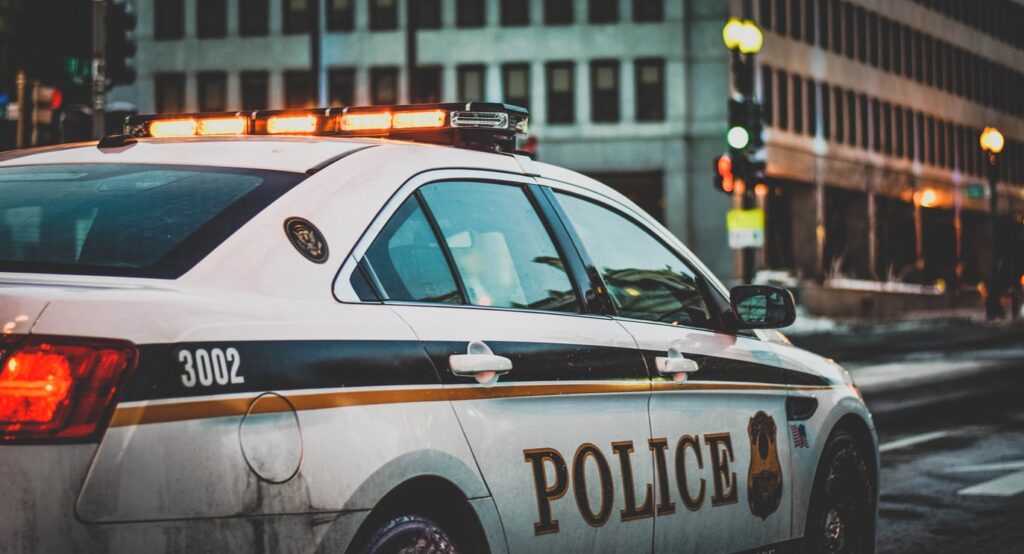The colors of police cars in North America are usually black and white. Most police cars’ doors and tops have been painted white for decades, while the trunk, hood, front fenders, and rear quarter panels have also been painted black.
These police cars were usually only available in one color, which was either white or black. To differentiate the units from ordinary cars, police graphics use a distinctive hue.
Over time, police and sheriffs’ departments, as well as state police organizations, have expanded their preferred color schemes to encompass a wider range of colors beyond the traditional black and white look.
For several reasons, several organizations have returned to a more conventional black and white design in recent years. This article will cite the reasons as to why police cars are black and white over the years.
The First Police Cars
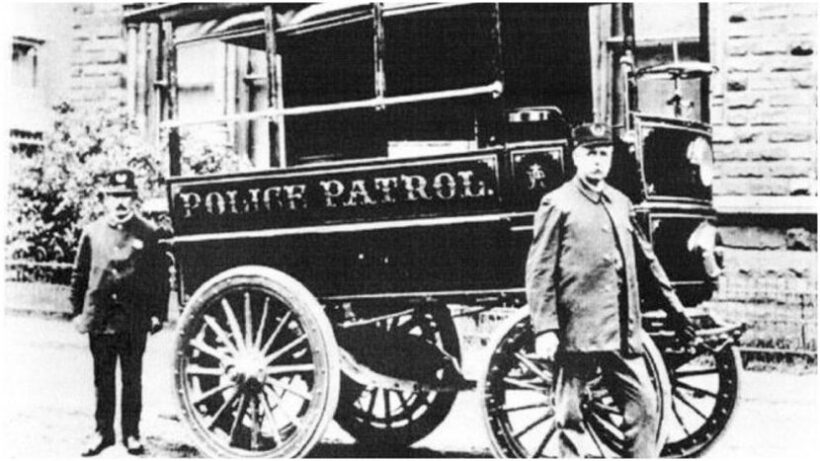
The humble beginnings of the police car date back to when it was just a horse-drawn carriage in 1909.
Detroit’s Police Commissioner, Frank Croul saw this as an opportunity for his department and became one of many city leaders who realized that cars were going to be commonplace among citizens soon enough.
So he began sketching out designs with them on January 18th, 1910, at Belle Isle Park before taking them home later that night, where his wife told him how much she hated every single one.
The first horseless police vehicle in America, the 1899 “paddy wagon” was commissioned for $2,400 (roughly 65 thousand dollars today) that contained a stretcher with prisoners inside and even headlights. It also had to be charged by batteries.
One early example of this contraption’s potential was not so good – during an angry race riot. It ended up sinking into a canal due to its lackadaisical design features like speed or range before being fished out again, but another one never existed because people didn’t think they could make any money off them.
George Croul, an inventor and founder of the first police car company in 1885, knew about its failure. However, he didn’t stop dreaming up new possibilities thanks to improvements from newer models with gas engines, which are more reliable and affordable for everyone.
Croul was a car manufacturer and mechanic before he became the city’s commissioner of police. He knew that gas-powered vehicles were becoming more common, so when Croul’s request to purchase one for his department came up short with Detroit officials.
They did not believe “a police car” would help out the force on patrol–he did what any good American entrepreneur does: invested $5k (more than 100K today) from pocket money into buying an old Packard himself.
Why Are Police Cars Black and White?
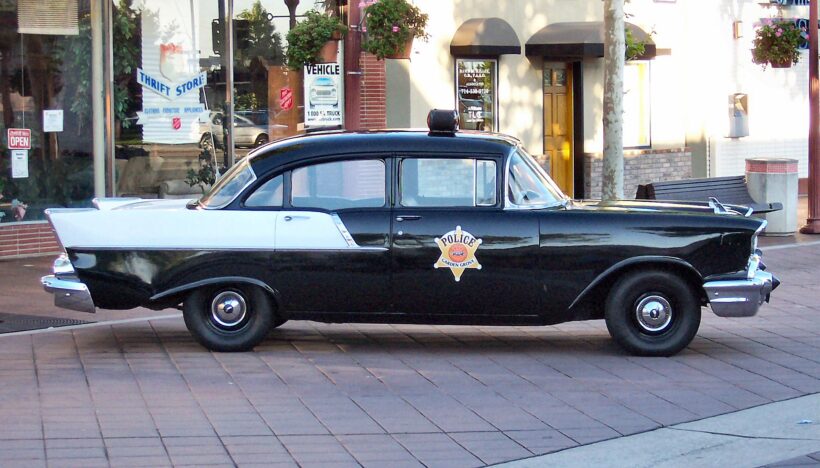
The 1970s through the 1990s saw several different colors for police vehicles, but by 2000 it had changed to just black or dark tones.
In this period, lighter shades were used in rural areas, and blue was especially popular with highway patrol units who needed visibility from long distances away when driving on highways at night.
In recent years we have seen an increased use of more colorful paints such as green which became very common among federal law enforcement agencies because they could afford them better than state departments would be able to.
Often, these flashy new color schemes can make drivers uncomfortable if not scared out of their wits.
The iconic black and white patrol cars of police officers have been a recognizable symbol for years. But why do they follow this color scheme? It turns out there’s more than one answer. Check out the reasons below:
1. Visibility
The primary reason for the black-and-white color scheme of police cars is their visibility.
Studies have shown that unlike some other vehicles with similar colors or designs (such as red), these alternating light patterns make them more eye-catching when driving at night and in low lighting conditions.
2. Morale
The use of black and white in the police force is another way for officers to show pride. The colors are used across departments which signifies the unity between law enforcement agencies from all over America, making them feel like one big family.
3. Stand-out
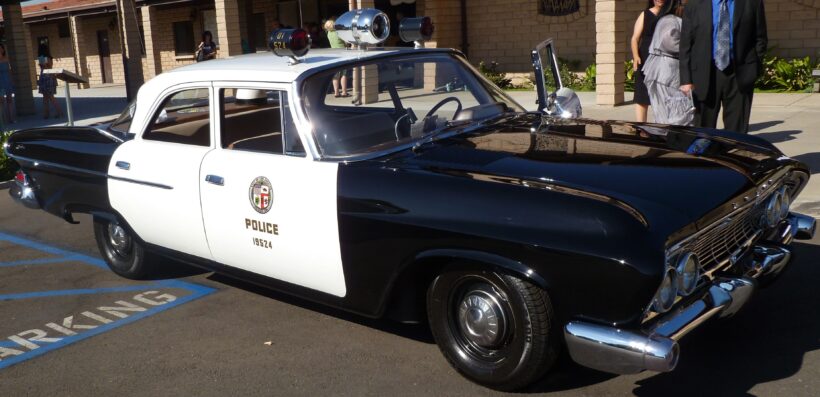
The black-and-white color scheme began in the 1950s. Before police cars were painted this way, they were all solid blacks with no distinction whatsoever– but then someone had an idea: why not just add some white stripes? It seemed easy enough at first glance.
The striped look was a quick hit among many departments until it became clear that other civilians saw nothing special about our law enforcement vehicles either.
The solution came when officers noticed how easily recognizable their colors compared with those old dreary standards – so much more eye-catching without looking overdone or flashy (which usually translated into negative feedback).
4. Solid Colors
The switch to white, blue or green colors for police cars was a budget-saving measure in the 1990s. It is because emblems were embellished with patterns and designs as an effort by agencies to make their vehicles stand out from civilian models more than ever before.
5. Back To Black
The shift to black-and-white paint jobs was done in the mid-2000s, and surveys show that it is more popular than before.
The color scheme provides officers with an easier way of identifying themselves and making them stand out on traffic stops since their stripes are now visible at night or during low light conditions.
Get Back in Black and White
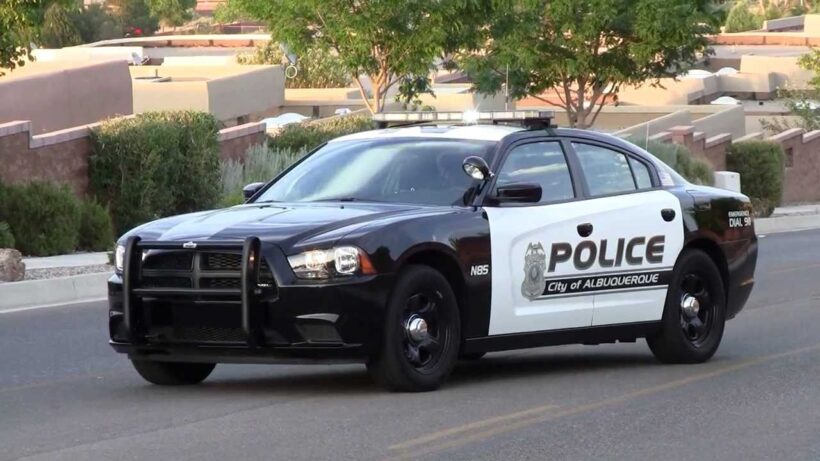
While the future of police cars remains uncertain, law enforcement agencies are experimenting with vehicles that have all their equipment (lights and sirens) built into a single-vehicle.
The police force will continue to evolve to keep citizens safe and sound. They can expect a variety of cars from around the world, such as those used by Dubai’s Police Department or even Tesla models that convert into law enforcement vehicles.
The shift back to black-and-white police graphics is a result of departments wanting more visible symbolism. The color scheme has been shown as being more favorable, accessible, and identifiable for officers or security graphics. Get your car decals done with http://gdigraphics.com/.

